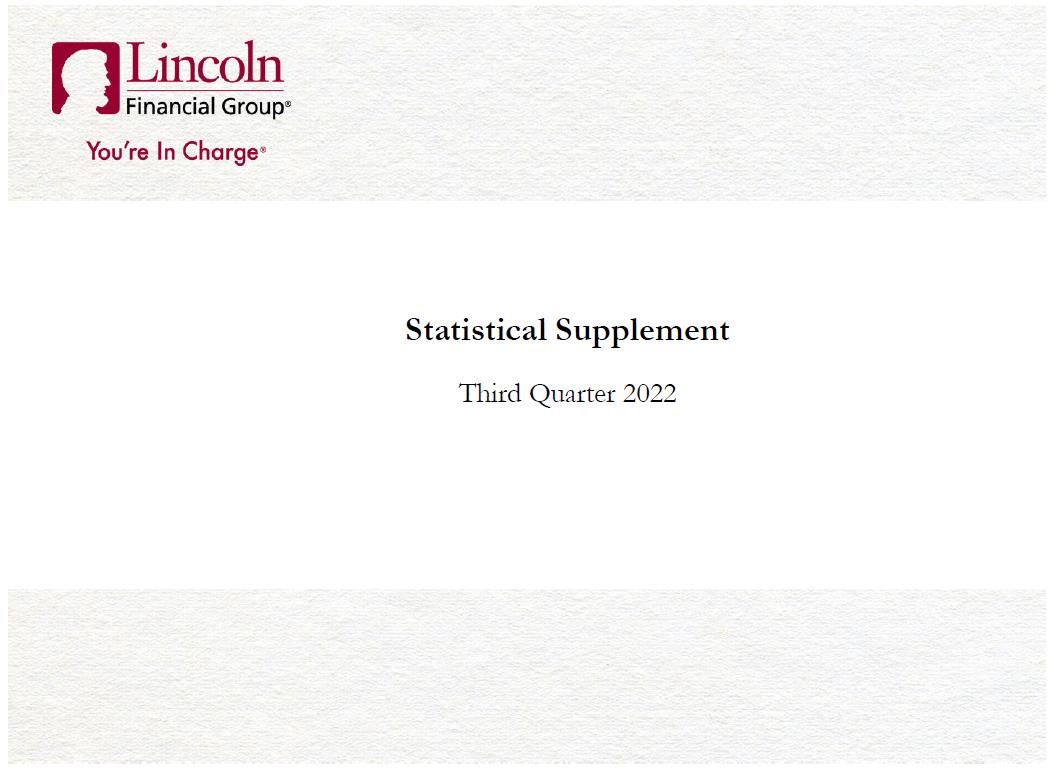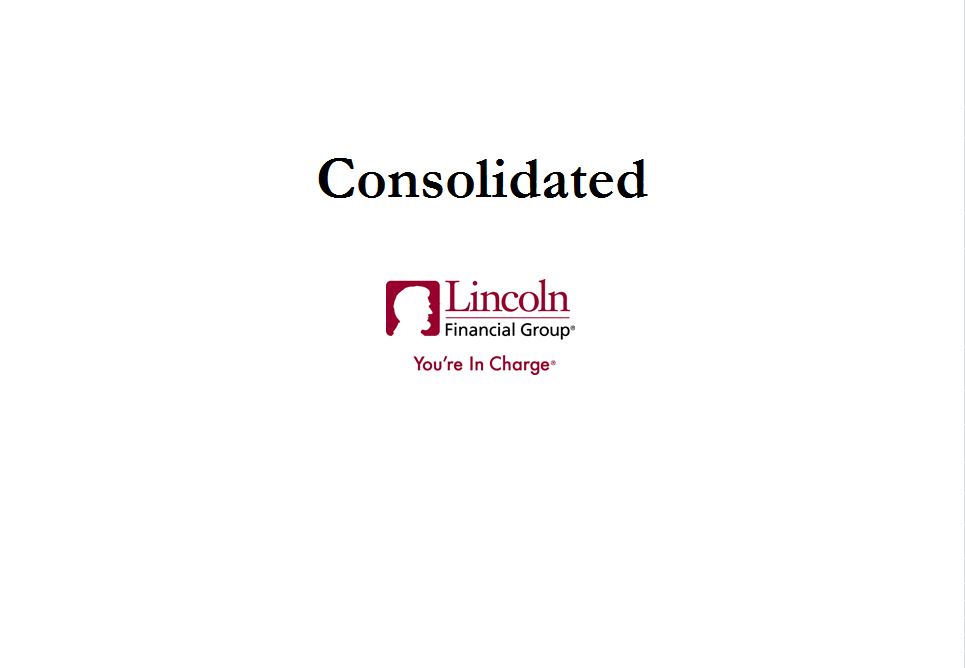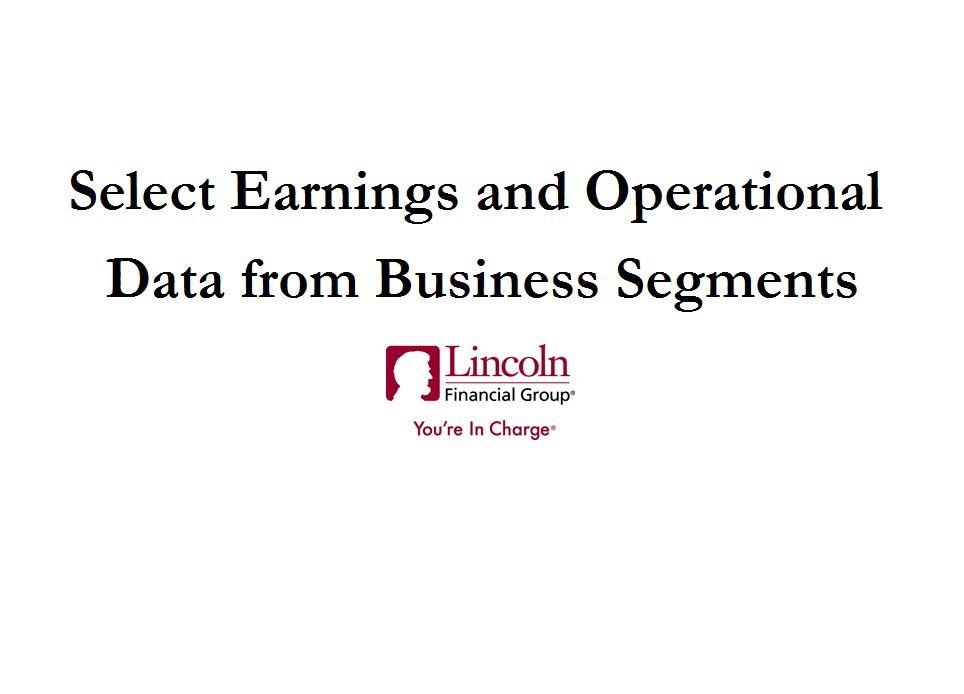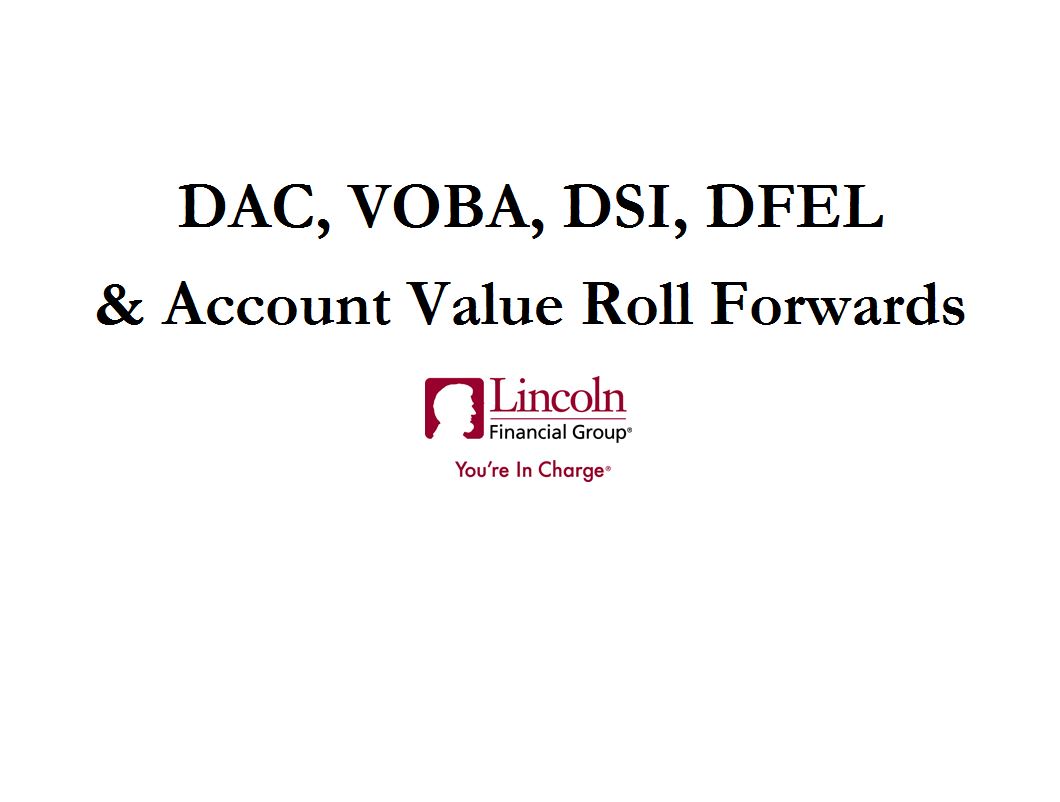| | | | | | | | | | | | | | | | | | | | | | | | | | |
| Lincoln Financial Group | |
| Notes | |
| | |
| | | | | | | | | | | | | | | | | | | | | | | | | | |
| Computations | | | | |
| • The quarterly financial information for the current year may not sum to the corresponding year-to-date amount as both are rounded to millions. | |
| • The financial ratios reported herein are calculated using whole dollars instead of dollars rounded to millions. | |
| • We exclude deferred units of LNC stock that are antidilutive from our diluted earnings per share calculation. In addition, for any period where a net loss or adjusted loss from operations is experienced, | |
| shares used in the diluted EPS calculation represent basic shares, as the use of diluted shares would result in a lower loss per share. | |
| • Return on equity (“ROE”) measures how efficiently we generate profits from the resources provided by our net assets. ROE is calculated by dividing annualized net income (loss) (or adjusted income (loss) | |
| from operations) by average equity, excluding accumulated other comprehensive income (loss) (“AOCI”). Management evaluates consolidated ROE by both including and excluding the effect | |
| of average goodwill. | |
| • Book value per share, excluding AOCI, is calculated by dividing stockholders’ equity, excluding AOCI, by common shares outstanding. We provide book value per share, excluding AOCI, to enable | |
| investors to analyze the amount of our net worth that is attributable primarily to our business operations. Management believes book value per share excluding AOCI is useful to investors because | |
| it eliminates the effect of items that can fluctuate significantly from period to period, primarily based on changes in interest rates. Book value per share is the most directly comparable GAAP measure. | |
| • Pre-tax net margin is calculated by dividing adjusted income (loss) from operations before taxes by net revenue, which is defined as total adjusted operating revenues less interest credited. | |
| | | | | | | | | | | | | | | | | | | | | | | | | | |
| Definitions | | | | | | | | | | | | | | | | | | | | | | | | | |
| Holding company available liquidity consists of cash and invested cash, excluding cash held as collateral, and certain short-term investments that can be readily converted into cash, net of commercial | |
| paper outstanding. | |
| Sales as reported consist of the following: | |
| • Annuities and Retirement Plan Services – deposits from new and existing customers; | |
| • Universal life insurance (“UL”), indexed universal life insurance (“IUL”), variable universal life insurance (“VUL”) – first-year commissionable premiums plus 5% of excess premiums received; | |
| • MoneyGuard® linked-benefit products – MoneyGuard® (UL), 15% of total expected premium deposits, and MoneyGuard Market AdvantageSM (VUL), 150% of commissionable premiums; | |
| • Executive Benefits – insurance and corporate-owned UL and VUL, first-year commissionable premiums plus 5% of excess premium received, and single premium bank-owned UL and VUL, 15% of | |
| single premium deposits; | |
| • Term – 100% of annualized first-year premiums; and | |
| • Group Protection – annualized first-year premiums from new policies. | |
| Throughout the document, “after-DAC” refers to the associated amortization expense of deferred acquisition costs (“DAC”), value of business acquired (“VOBA”), deferred sales inducements (“DSI”) | |
| and deferred front-end loads (“DFEL”) and changes in other contract holder funds. | |
| | | | | | | | | | | | | | | | | | | | | | | | | | |
| Sources of earnings are defined as follows: | |
| • Investment spread earnings consist primarily of net investment income, net of interest credited earned on the underlying general account investments supporting our fixed products less related | |
| expenses. | |
| • Mortality/morbidity earnings result from mortality margins, morbidity margins, and certain expense assessments and related fees that are a function of the rates priced into the product and level | |
| of insurance in force. | |
| • Fees on assets under management (“AUM”) earnings results consist primarily of asset-based fees charged based on variable account values less associated benefits and related expenses. | |
| • Variable annuity (“VA”) riders earnings consist of fees charged to the contract holder related to guaranteed benefit rider features, less the net valuation premium and associated change in | |
| benefit reserves and related expenses. | |
| | | | | | | | | | | | | | | | | | | | | | | | | | |
| | | | | | | | | | | | | | | | | | | | | | | | | | |
| Page 1a | |




